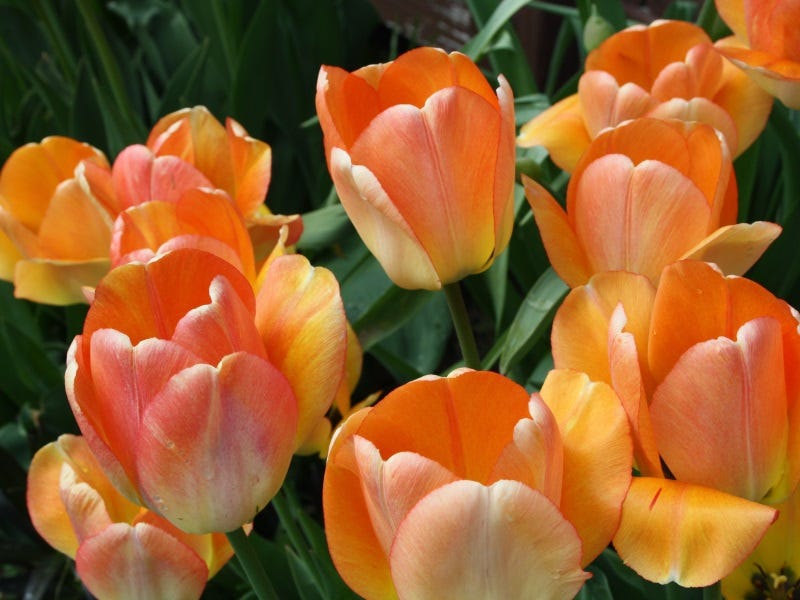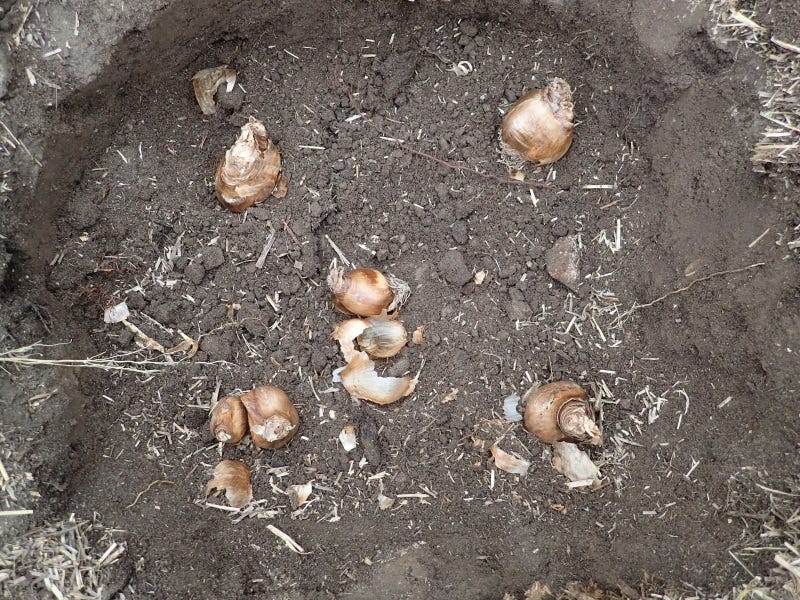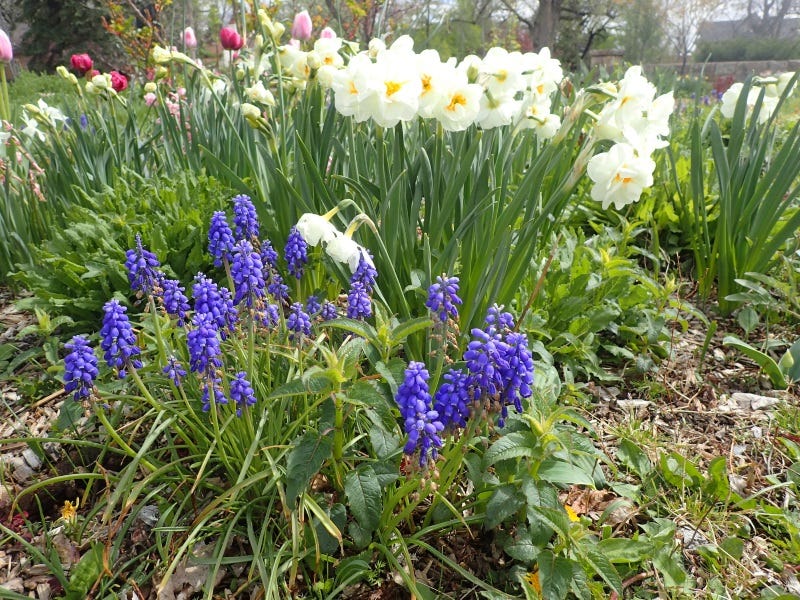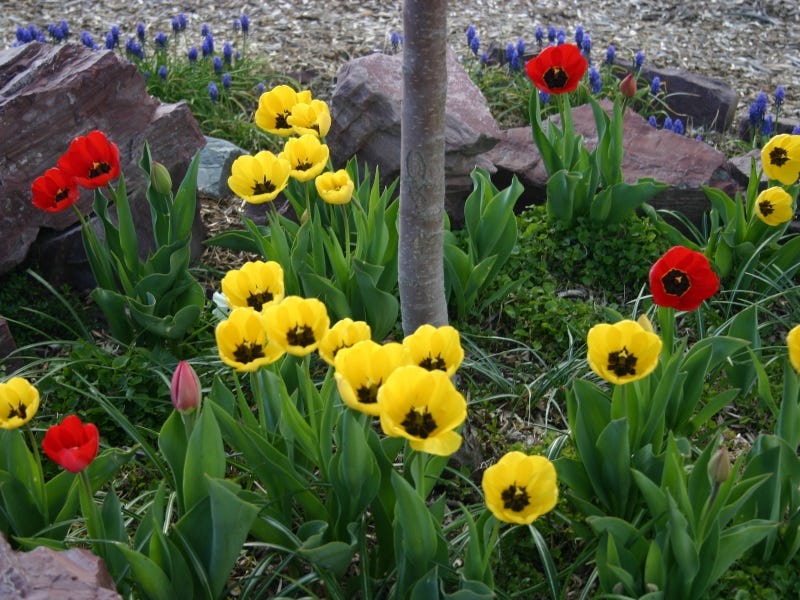Planting Spring Bulbs During Fall: Which Bulbs Should I Plant and Where Should I Plant Them?

By Amy Grisak

There’s snow in the mountains and frost on the ground at home, so it may be difficult to think about spring during the middle of fall, but, by doing so you’ll ensure a bright, colorful garden in April and May.
And, by planting spring bulbs during fall you’ll grab a few more enjoyable moments in the garden before the snow puts everything to bed for five months.
Fortunately, spring bulbs are some of the easiest flowers to grow, and very satisfying to see after a long winter. Their riot of color is a welcomed change after the monochromatic season, and a number of varieties are known as much for their fragrance as for their intense beauty.
Bonus: These spring plants are practically fuss-free. In fact, pests are rarely an issue, a light frost doesn’t bother them, and spring rains take care of watering. This is why taking a few minutes to plant any of these bulbs before the ground freezes pays dividends in spring.
Plan Your Spring Floral Pallet
By choosing varieties that emerge early and bloom late, you can feasibly extend the spring bulb season from when the snow melts to the spectacular early summer blossoms.
Crocus
Several crocus species often emerge in February and early March sometimes even poking through the snow while later blooming varieties grow big and beautiful when the season is more moderate. While purple, white, and yellow are predominant colors, crocuses are also found in soft creams, fuchsias, and even combinations such as burgundy and gold.
Siberian Squill
The leaves on many spring bulbs are nondescript, yet even the deep green, almost grasslike foliage of the early blooming Siberian squill makes an attractive early display. When they bloom, the deep-blue bell shaped flowers stand only 6 inches tall, but are eye catching, especially when planted en masse.
Snowdrops
Along with crocuses, the aptly named snowdrop is an early bloomer. Only 6-8 inches tall, they are best planted in large groups where their bright white blooms truly shine.

Grape hyacinth
Aptly named, their tiny purple-blue flowers look like a cluster of grapes. Grape hyacinths are not actually a hyacinth. A member of the Muscari family, based on the Greek word for “musk” it’s no surprise one of their endearing characteristics is a rich fragrance.
Grape hyacinths are only 4-6 inches tall, but when planted in large groups, they naturalize beautifully. Some people even plant them in the lawn and allow them to bloom before cutting in the spring.
Daffodil
If you have deer in your yard, you have to have daffodils—these are one of the few plants deer won’t eat since all parts of the plant are poisonous. This doesn’t affect those of us who love cutting them, as long as we’re not slicing them on our salads, and they are a beautiful addition to the spring garden.
The family of daffodils, which is technically called Narcissus, is made up of over 13,000 hybrids, giving us practically limitless options for shapes, sizes, and fragrance levels. From delicate blooms barely an inch in diameter, to enormous trumpet-like flowers, daffodils there are varieties that fit well in any spring landscape.

Tulips
There is an enormous array of tulip varieties providing flowers from early May to well into early summer, all on stems that can be barely 6 inches high to a foot-and-a-half tall.
Tulips can look like simple, traditional flowers that every child learns to draw, or they might be the fringed beauties known as the “parrot” tulips. Colors range from muted pastels to variegated stunners in bright pink, orange, yellow, and even blossoms with all of the colors of the rainbow.

Hyacinth
Even with your eyes closed, hyacinths are easy to recognize. Their heavenly fragrance perfumes the mid-spring days, while their showy blooms are stunning in the garden, as well as in bouquets. Short varieties are closer to 7 inches tall, but some cultivars grow to a foot high. Colors range from pure white to pink, and even deep purple hues.
How And Where To Plant Spring Bulbs
The smaller bulbs, such as snowdrops, grape hyacinths, crocuses, and Siberian squill, make the greatest visual impact when planted in large groups, particularly with the intention of allowing them to spread. As a general rule, plant these bulbs 3 inches deep and 3-4 inches apart. Dig a large hole and space them accordingly, or use a trowel to dig individual spaces. Cover them with soil and simply wait until spring.
Larger bulbs, such as many of the daffodils and tulips, should be planted 7 inches deep and 6-10 inches apart, depending on size of variety. Make sure the nose (the pointy part of the bulb) points upwards and they are positioned in groups of at least 5 for the best display.
Unlike most bulbs, which do fine in average garden soil, hyacinths require soil that is amended with compost and rich, organic matter for the best blooms. Either individually or in groups, plant them 7 inches deep and 6-8 inches apart.
How To Protect Spring Bulbs and Flowers From Pests
Most of the time, there is relatively little pest pressure on spring flowers. Squirrels may dig up bulbs, but they can be discouraged by adding oyster shell to the hole when you plant spring bulbs, or if they are truly tenacious, place chicken wire over the bed.
Deer also enjoy some of these spring flowers, particularly tulips. If a barrier around the flowers isn’t an option, there are a number of commercial repellents on the market, or you can treat them with your own. To do so, whisk together a dozen raw eggs in a gallon of water and douse your plants with the liquid every few days to discourage the deer from making a meal of them.
No Time To Waste
In these waning days of autumn, it’s time to think spring. Whether you plan a well-organized display, or simply pick up a bag of mixed bulbs, this is a pleasant task to finish before the snow falls. Dig now to reap the rewards of a gorgeous spring display.
